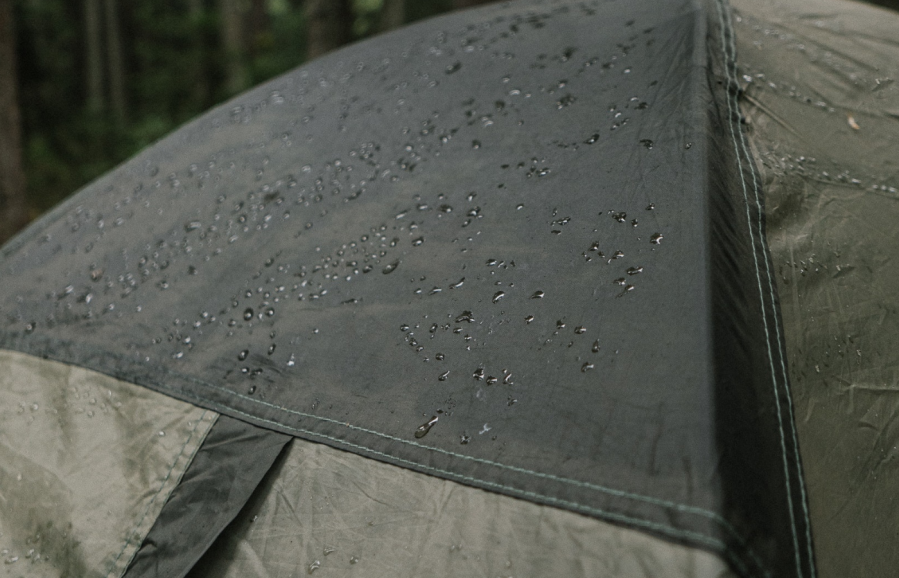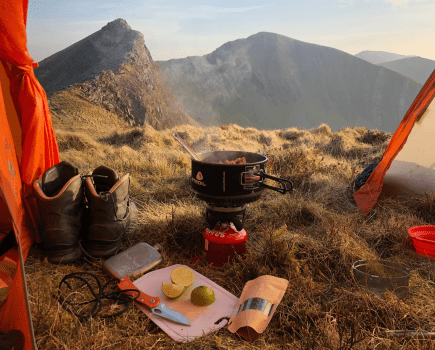Are pop-up tents waterproof? You’re about to start planning a camping trip and you’ve seen a pop-up tent in our guide to the best pop-up tents that fits your needs but the weather forecast is looking a bit iffy and now you’re asking yourself the big question: Will I stay dry in my pop-up tent?
There’s good news and there’s bad news. The bad news is that the average pop-up tent will not be completely waterproof in a heavy, consistent downpour. The good news is that we’re going to explain exactly how waterproofness is measured and what to look for when buying your next tent.
How is Waterproofness Measured?
Most tents will have an HH rating. That’s a technical term that relates to how much water pressure the material can take before it leaks.
Here’s how ChatGPT explains it: HH stands for Hydrostatic Head, a measurement used to determine the waterproof capabilities of a tent’s fabric. Expressed in millimetres (mm), the HH rating indicates the amount of water pressure the fabric can withstand before it starts to leak.
Here’s how I explain it: The higher the HH number, the less likely you are to get wet whilst sheltering in your tent from the British weather. We go into more about tents and their waterproofness in our are tents waterproof? explainer.

Photo by Anna Urlapova
What HH Rating Do You Need For Camping?
Search online for a selection of tents and you will find that most tents have a different HH rating. It can be confusing when you try to understand exactly what HH you should be looking for.
Here’s a very general guide:
- Less than 1000mm: Suitable for light rain and dry conditions, but not recommended for more challenging weather.
- 1000mm to 2000mm: Good for summer camping where you might encounter occasional rain showers.
- 2000mm to 3000mm: Suitable for most three-season camping scenarios, capable of handling moderate rain.
- Above 3000mm: Ideal for harsh conditions, including heavy rain and snow. These tents are often used for mountaineering or winter camping.
However, there’s a caveat to relying solely on the HH number. The HH rating of a tent is only one factor when it comes to keeping dry. The general construction of the tent also plays a big part. Seams, zips and vents can all allow water to get into the tent, regardless of how high the HH rating is.
If you’re wondering what your pop-up tents waterproofness is well, typically it will have an HH rating of somewhere between 1000 and 1500, but ultimately, these tents are not designed for heavy rain and the seams and zips will likely fail too meaning they’re not great if you’re looking to stay dry.
Look for brands that you’ve heard of before and don’t assume the cheapest option is going to be the best for you. Bear in mind that you could end up lying in a soggy sleeping bag in the middle of the night, wishing that you’d spent a little bit more to get a tent that would keep you dry.
Condensation Build Up
Another thing to think about is the condensation build-up. Having a tent that keeps the water out is only one-half of it; allowing moisture out is the other half.
Pop-up tents are notorious for trapping moisture inside, mainly due to their single-skin design. So although they offer great convenience with the ease of setup, you could end up paying for that with condensation if it’s particularly damp or humid.
Are Pop-Up Tents Waterproof?
Here’s the bottom line: a pop-up tent will keep you dry if you’ve only got a light shower or two to worry about. Anything heavy and prolonged and you’re probably going to start seeing the water seep through. After that, it won’t be long before you’re worrying about your gear getting soaked.
Pop-up tents are cheap, easy to set up and have lots of great uses, but for a proper camping trip when you can’t guarantee the weather, you’d be better off looking for something more robust.

Written by Rob Haggan
Rob is the face behind Weekend Adventurers. He’s been an outdoor enthusiast since childhood, and his passion has only grown stronger over the years. His work has been recognised by Ordnance Survey, naming him as a Get Outside Champion for four consecutive years.








